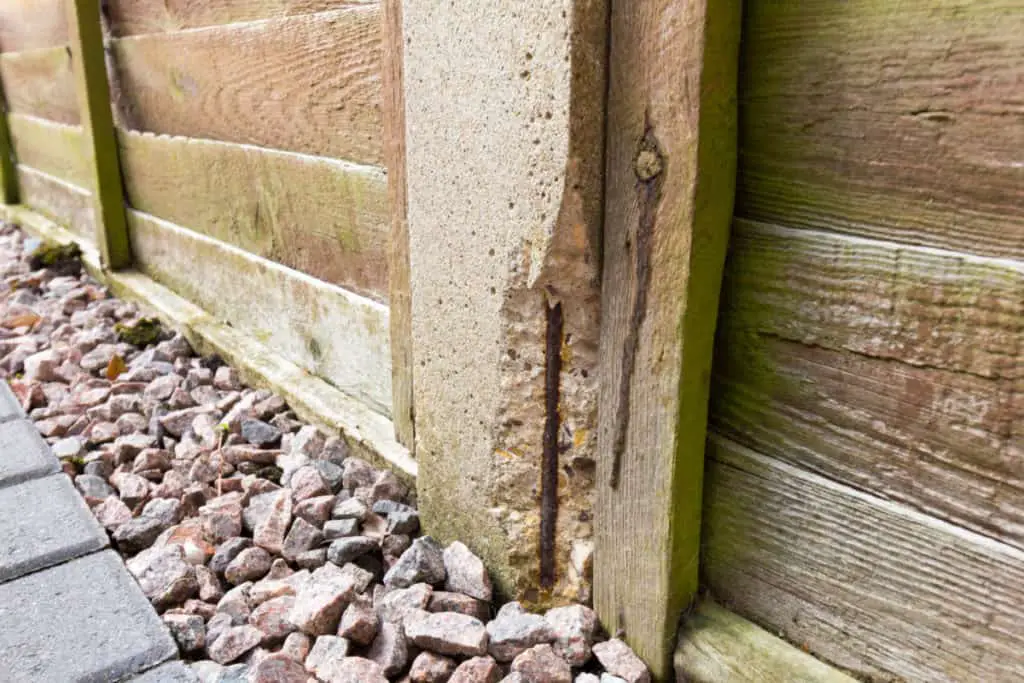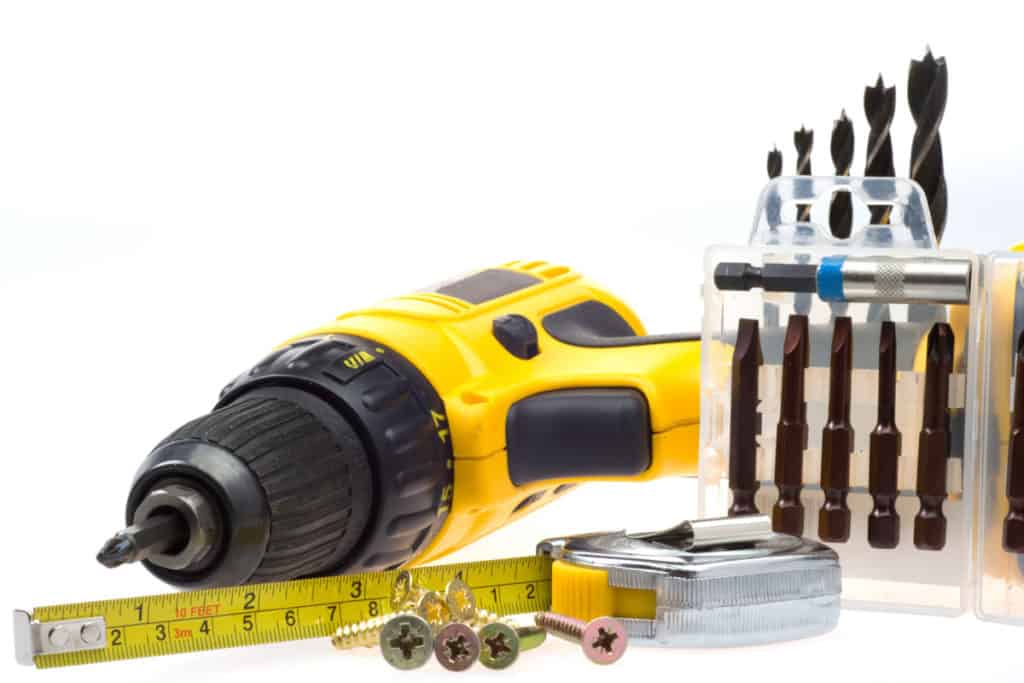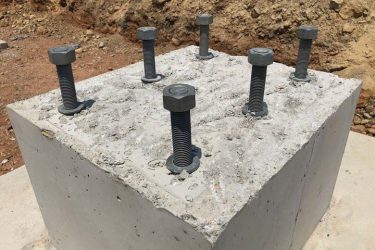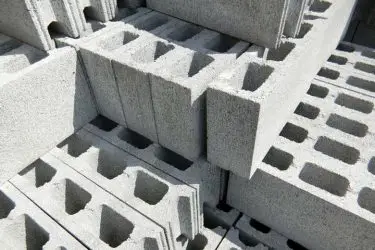Mending fences is a task that most home- and landowners face every once in a while. However, in some cases where fences are held up with concrete posts, mending the fence can be a challenge, especially when drilling into the concrete itself. It is possible, however, and there are a few tricks you can use to make sure the concrete itself doesn’t fall apart.
Concrete fence posts can be drilled by using an SDS hammer drill and masonry drill bits designed for heavy-duty work. Start with a small 4-mm drill bit and drill in the center of the post, watching out for reinforcing rods. Increase the size to 6-mm, then 8-mm bits or until you reach the right size.
Concrete is extremely durable and cheap. Using it to construct posts for a fence comes with its own set of advantages and disadvantages, but if you do use concrete for your fence posts, you may come across a situation where you need to drill a hole in the concrete. It can be tricky, but it is possible.

Table of Contents
Concrete Fence Posts
Fence posts made from concrete are used mainly because of their durability and resistance to water and rotting, unlike wood. It comes as no surprise that these are usually used to fence in areas that are constantly or perennially wet.
Related article: Concrete vs Wooden Fence Post: Is concrete worth the trouble?
Concrete fence posts can be bought from a retailer or manufacturer, or they can be poured on sight.
They are an alternative to wood posts, but the danger is that concrete has been shown to be toxic for the environment. There are alternative materials to concrete, but none are as cheap or common as concrete.

You might also find yourself fixing broken fences or installing concrete posts for fencing in your yard.
If the concrete post is “slotted,” it will have four steel reinforcement bars that run down the middle. Concrete posts also contain aggregate, which is a mixture of rock or sand added into the mixture in order to give it strength.
All in all, drilling into concrete posts can be a mess if done wrong or if there are obstacles in your way.
Another thing to consider is using the right type of tools to make the job easier on yourself rather than harder. One of the best heavy duty drills on the market for this kind of project are SDS drills.
What Are SDS Drills?
Unlike wood, concrete is very difficult to drill into with normal drills. For example, if you want to hang something from them like a potted plant or create a support for a table along the fence, then you might find yourself in need of drilling holes for bolts or brackets in the concrete.
SDS drills were created for these kinds of projects.

An SDS drill is a type of “hammer” or “chisel” drill. It’s a special kind of drill that is designed for tough and demanding applications.
The “SDS” stands for “Slotted Drive System” which means that the drill’s chuck was designed with “slots” that could only fit specialized SDS drill bits.
Your specific project may not need such a heavy-duty drill. Before going out and buying a brand new SDS drill, you may want to try a normal multi-purpose drill for the job and see if it works. Otherwise, SDS drills are some of the best drills on the market.
I like this one from Bosh (link to Amazon), which I absolutely can recommend if you need one.
“SDS” is not a brand, simply a type of drill that many manufacturers create for the market.
Some brands include DeWalt, Makita, and Bosch. They sell both corded and cordless SDS drills. While both can do the job, corded drills are generally stronger and give greater torque than cordless drills.
What Are Masonry Drill Bits?
Drilling through concrete requires a special kind of drill bit that can fit into an SDS drill.
These kinds of bits are called “masonry” drill bits because you can use them to drill through concrete, brick, and stone.

You can recognize an SDS masonry drill bit by looking at its arrowhead-shaped tip.
Masonry drill bit diameters come in a variety of sizes, usually measured in inches or millimeters. They also come in a variety of materials. A few of the more popular, stronger materials used are tungsten-carbide, and chrome-nickel molybdenum steel.
Deciding which drill bits you need for drilling into concrete may often come down to brand. As long as the drill bits are SDS-quality and fit in a hammer drill, they should be good to use.
However, it’s always a good idea to use drill bits that are the same brand as the drill itself to prevent any potential problems that may arise when fitting the bits in the chuck.
How To Drill A Concrete Post
The best place to start is to use a smaller drill bit first, then switching to larger drill bits as you reach the size of the hole you’re aiming for.
Because some concrete posts contain steel reinforcement, it can be difficult to drill accurately. If it’s a fence post that you poured and molded yourself, then you’ll know whether it’s steel-reinforced or not.

One of the dangers is breaking apart the concrete as you’re drilling, which is one of the reasons why you start out using a smaller drill bit.
If the concrete is reinforced, then there’s no perfect place to start drilling. There is always a risk involved, unfortunately, but drilling slowly at first will decrease the torque and hopefully decrease the chance of cracking the post.
Another danger while drilling is blowing out the concrete on the back face if you’re trying to drill all the way through the post.
Pull out the drill frequently to clear out the concrete dust. If you’re going to bolt something to the post, make sure to use large washers to better fasten the object to the post.
Lastly, be sure to wear eye, mouth, and nose protection since breathing in concrete can cause lung and other health problems. If you come across any problems along the way, consult a contractor.
Related article: How to Drill Into Concrete (And what drill and bit you need)



